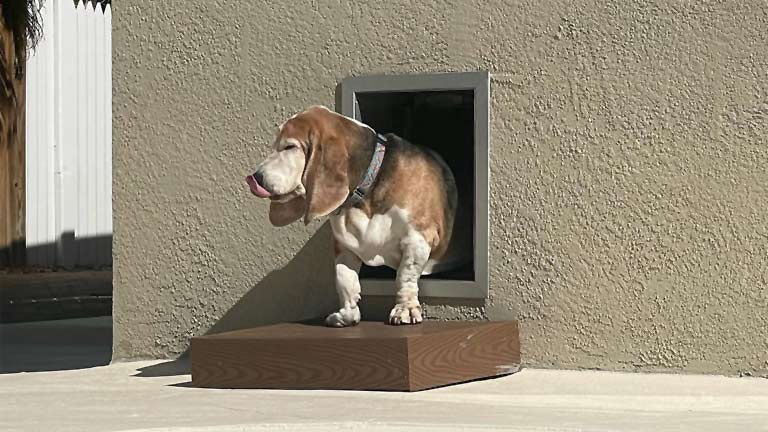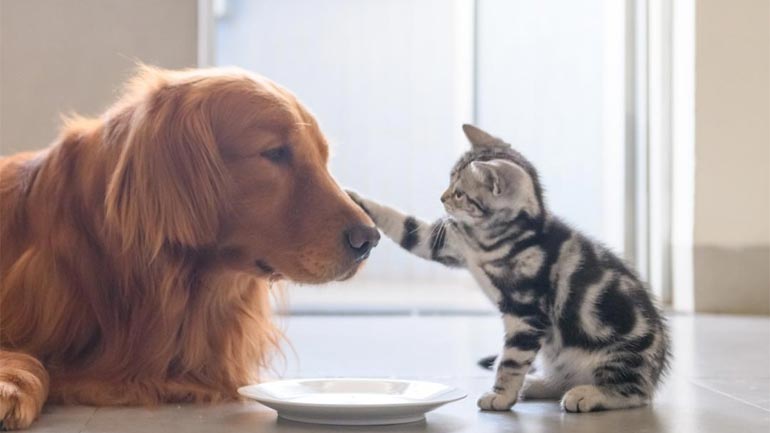
Introducing a dog door into your home can revolutionize the lives of both you and your furry companion. It offers unparalleled convenience, allowing your pet to venture outdoors independently for bathroom breaks or bask in the fresh air. Although the idea of teaching your pet to use a dog door may initially appear overwhelming, there’s no need to worry. With patience, consistency, and the correct approach, you can effectively train your pet to conquer the world of dog doors. This comprehensive guide is designed to walk you through a step-by-step process for training your puppy that will empower your pet to utilize a dog door with confidence and ease.
Understanding the Basics
To lay a solid foundation for the puppy training ahead, it is crucial to grasp the basics of dog doors first. Start by acquainting yourself with the various types of dog doors on the market, including flap doors, electronic doors, and sliding panel doors. Consider essential factors such as size, durability, and weather resistance when selecting the ideal option for your pet. Moreover, it is imperative to ensure that the door is installed correctly and positioned at an appropriate height, enabling your pet to access it easily. By understanding these fundamental aspects, you will be well-prepared to confidently embark on the training journey and set your pet up for success.
Introducing the Doggy Door
The initial phase of training your puppy to utilize a doggy door involves introducing them to this novel concept. Begin by propping open the dog door and motivating your pet to approach it. Employ positive reinforcement methods, such as offering treats or toys, to establish a positive association with the door. Grant your pet the freedom to explore its opening at its own pace, prioritizing its comfort and sense of security. These initial steps create a foundation of positivity and curiosity, setting the stage for a successful puppy training experience.
Positive Reinforcement Training
Positive reinforcement emerges as a powerful and potent training tool when teaching your pet to use a doggy door. By employing this approach, you can foster a positive experience for your furry friend. Whenever your pet approaches or successfully navigates the dog door, offer rewards such as treats, enthusiastic praise, or engaging play sessions. Initially, you may need to assist by holding the door open, gradually reducing your involvement as your pet gains confidence and independence. Consistency plays a pivotal role in this training process. Establish a predictable routine and ensure you reinforce the desired behaviour each time. By consistently associating the door with positive outcomes, you will instill a sense of motivation and enthusiasm in your pet, making their progress all the more rewarding. Through the power of this kind of reinforcement, you can successfully guide your pet toward mastering the skill of using the door with confidence and reliability.
Gradual Encouragement
As your pet becomes more at ease with the concept of the doggy door, it’s time to empower them to navigate it independently. Begin by partially closing the door, allowing them to nudge it open using their nose or paw. Over time, gradually increase the door’s closure while providing continuous positive reinforcement and encouragement. Remember to exercise patience, as every pet learns at its own pace. If your pet displays hesitation, take a step back and offer reassurance before moving forward. By gradually building their confidence and providing support, you can guide your pet toward mastering the art of using the dog door autonomously.
Troubleshooting and Common Challenges
While most pets quickly adapt to using a doggy door, it’s important to be prepared for various potential challenges that may arise during puppy training. By proactively identifying and addressing these issues, you can ensure a smoother and more comfortable experience for both you and your pet. Some common challenges include fear and uncertainty, physical barriers, especially for pets with certain debilitating physical conditions, and environmental factors such as harsh weather conditions. You can overcome obstacles and ensure a successful training process by remaining aware of these potential issues and addressing them promptly. Each pet is unique, so adapt your approach to suit your pet’s specific needs and personality. With dedication and troubleshooting, you will guide your pet toward using the dog door confidently and independently.
Final Thoughts
In conclusion, teaching your pet to use a dog door is an achievable goal with patience, consistency, and positive reinforcement. By understanding the basic mechanics of the door, introducing your pet to the concept, and gradually encouraging their independent use, you can empower them to enjoy the freedom and convenience it offers. Remember to adapt the process to suit your pet’s individual needs and pace of learning. With time and effort, your furry friend will confidently navigate their door, allowing them to explore the outdoors and enjoy the benefits of easy access whenever they need it. Embrace this puppy training journey as an opportunity to strengthen the bond with your furry companion and provide them with a rewarding experience of newfound independence.




